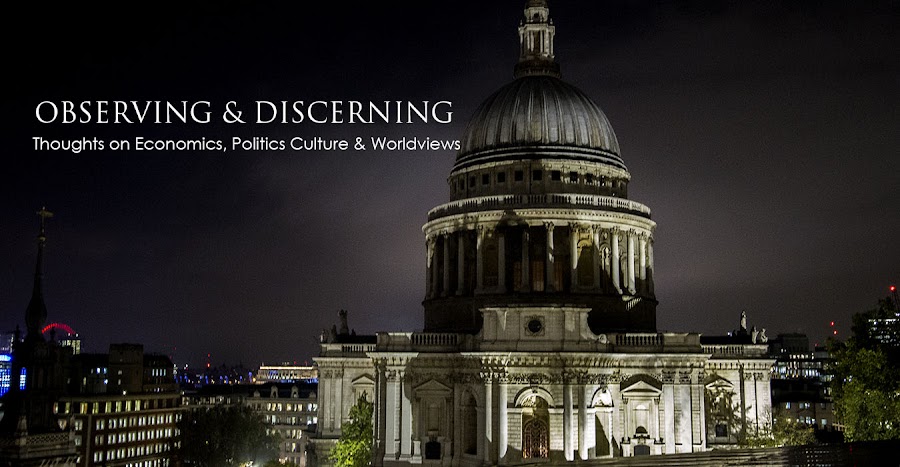The interior of FCCS Richmond is quite beautiful: simple,
elegant white walls with two enormous paned windows, two columns of pews and two lecterns & a potted plant on an altar-like raised platform. And that was it: no statues, no paintings, no stained glass, no decorative adornments of any kind. And no
crosses. However there were two large inscriptions on each of the walls under the windows, one a verse from Christian scripture
and one a quote from the religion’s founder, Mary Baker Eddy.
The service included some hymns, notices, a solo, and the
Lesson-Sermon, including passages from what they call the Golden Text (the Christian Bible). The Lesson-Sermon was a series of recitations
from scripture and the Christian Science’s ‘holy’ book, Science and Health. These readings were given by a man and woman
who stood behind each of two lecterns.
The woman read a passage from the NIV, then the man would read Mary
Baker Eddy’s corresponding interpretation.
What seemed to be happening was that the
second reader, the man reading passages from Science and Health, was taking the
Christian verses of scripture and rewording or reworking them to fit into the
Christian Science doctrine. It was like a point, counter-point
presentation. It called to mind Deepak
Chopra’s The Third Jesus and A Course in Miracles, both of which use Christian
language, passages and stories from scripture, but reinterpret them from a
monistic perspective, as if to say, "you may think that the Bible says this,
but what it really means is this other thing.”
Which also made me think of the veritable library of books I’ve
acquired over the course of the past decade which I’d thought were about
Christianity. I'd collected these books
after my short New Age/self-help reading stint. But over time, I’ve found that I’ve had to
move a great many of what I thought were Christian books to the New Age
shelf. I don’t read many ‘Christian’ books
anymore.
My impression of Science and Health is that it's
remarkably similar to A Course in Miracles; the following are some verses from the sermon: “Man is spiritual and perfect. The eternal truth is that there is no
separation between man and God. Man is
the expression of God’s being, eternal with God. Man reflects infinity and the true nature of
God. Mortality is an illusion. The body
reflects what governs it: either truth or error. Every function of the body is governed by the
divine mind. All that exists is divine
mind. Man suffers because he believes in sickness which can be overcome by
becoming conscious. The correct view of man is that he is pure and holy.” I’d say pretty much everything I heard was in
contradiction to Christian scripture. Their
Scientific Statement of Being provides a good summary of the Christian Science
doctrine:
There is no life, truth, intelligence, nor substance in
matter. All is infinite Mind and its
infinite manifestation, for God is All-in-all.
Spirit is immortal Truth; matter is mortal error. Spirit is the real and eternal; matter is the
unreal and temporal. Spirit is God, and
man is His image and likeness. Therefore
man is not material; he is spiritual.[1]
After the service a very nice woman come up to me and
introduced herself. I told her about my project
and asked her whether Christian Science had any meditation, mysticism,
contemplative prayer or any sort of altered state of consciousness associated
with its spiritual practices. She resolutely said that these weren’t
connected to the Christian Science faith in any way. This
I find very interesting and a little surprising. So far, the
first religion I’ve encountered with no mystical side.



No comments:
Post a Comment